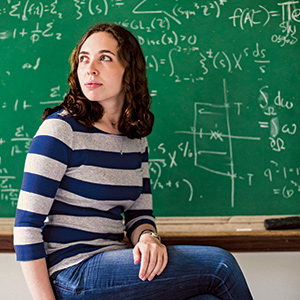Formula Ono
A new generation of math geniuses gathers steam.

Bryan Meltz
Surrounded by current and former students, Ken Ono is in perpetual motion—bouncing from conversation to conversation, firing off questions about progress on current work, debating problems, and offering up anecdotes related to the ideas being discussed.
Ono, Asa Griggs Candler Professor of Mathematics, is an internationally recognized number theorist who has earned renown for proving theorems that have long puzzled the greatest minds in mathematics.
Many of Ono’s students come from institutions around the country specifically to study with him, while others find him by fortuitous chance—all promising intellectuals whose academic paths have crossed with Ono’s.
Ono’s own path to academic achievement might have taken a very different turn if not for an almost preternatural connection to a gifted Indian mathematician who died almost a half century before Ono was born.
Srinivasa Ramanujan was a poor clerk in Madras, India, in 1914 when he began to write letters to the renowned mathematicians around the world, begging them to review his work. One of those letters caught the attention of British mathematician G. H. Hardy, who recognized the genius in the writer and arranged for Ramanujan to study with him at Cambridge University.
During the next few years, until his untimely death at age thirty-two in 1920, Ramanujan made highly original and unconventional contributions to mathematics that have inspired research to the present day, including much of Ono’s work.
“Following Ramanujan, whether I’ve meant to or not, has always been my destiny,” says Ono.
The son of a mathematician—Johns Hopkins University Professor Emeritus Takashi Ono—Ken Ono displayed remarkable mathematical aptitude from a tender age. As a child, Johns Hopkins psychologist Julian C. Stanley observed him for his study of exceptional talent.
“I was one of ‘those’ kids, but I didn’t want to be one of those kids. Who wants to be the only Asian kid in an all-white neighborhood who is good at math?” says Ono, the youngest of three sons whose parents escaped from post-World War II Japan because of his father’s mathematical talent. “My parents thought that the only way their kids could succeed was by becoming superstar scientists. That is what they trained us for. I kind of rebelled against that.”
At sixteen, he was desperate to find a different path when a “yellowed, delicate, rice paper envelope covered in exotic stamps” arrived in his mailbox and Ramanujan entered his life for the first time.
The carefully handwritten letter, addressed to his father, was from Janaki Ammal, the widow of Ramanujan, thanking the elder Ono for his donation to help fund the commissioning of a bust honoring her late husband.
“My father tells me the most incredible story, the true legend of Srinivasa Ramanujan,” Ken Ono recalls in his book. “It is the story of an Indian man who overcame incredible odds to become one of the most romantic and influential figures in the history of mathematics. It is the story of a self-taught dropout . . . it is the story that gave my father hope and inspiration as a hungry mathematician coming of age in postwar Japan.”
It’s also a story that gave the younger Ono hope that his course did not have to follow the rigid expectations of success set by his parents.
“I could tell immediately why my father loved the story of Ramanujan. It’s a romantic tale of what becoming a mathematician could be. He tried to live it. Then, on the other hand, you don’t have to be the straight-A student who has to succeed. That is what I got out of the story,” he says.
Ramanujan would become something of an academic spirit guide for Ono, cropping up throughout his life at times when he needed motivation or inspiration and was essentially the first of several important mentors Ono would rely on for guidance.
Shortly afterward, Ono quit high school and went to live with his middle brother—Santa Ono, now president of the University of Cincinnati—who was then a PhD student at McGill University in Montreal. He worked in his brother’s lab for a year, then applied to the University of Chicago, where he was accepted on his test scores.
Even given this chance, Ken Ono didn’t apply his full effort and talent to his studies. Initially a premed major, he scored a C+ on his first chemistry exam because he “wasn’t willing to do the work.” He switched his major to math because it had always come easily to him and he could get by without studying.
“My reputation was that I never did homework, I rode my bike, I was a disc jockey at local parties, that was what I did,” Ono says.
Toward the end of his junior year, a junior professor in complex variables called Ono to his office.
“He tells me ‘I know your dad, and I have to tell you, you really shouldn’t pursue a graduate degree in mathematics. You don’t have to do it just to please him,’ ” Ono recalls. “And I got so angry. He had no idea that I wasn’t even coming to half the classes. I wasn’t taking any notes.”
That summer, Ono was sitting on the couch in his fraternity house, flipping TV channels, when he landed on the local PBS station playing an episode of Nova called “Letters from an Indian Clerk.” Ono recognized the story of Ramanujan his father had told him years earlier.
“It made me think. I realized I owed it to myself and to my parents not to be the kid who wasn’t smart,” he says. “I went from being the kid who missed class or who sat in the back row trying not to be seen in class to the kid that sat front and center in the front row.”
That fall, Ono took a graduate-level course from Paul Sally, a beloved professor at the University of Chicago, and aced the class. Sally, who had heard of Ono’s slacker reputation, met with him and listened to his backstory. Sally then relayed his own story of being a star basketball player in high school and at Brandeis University, but a lackluster student. It was only after spending two years as a taxi driver in Boston that Sally returned to Brandeis with a similar determination to succeed.
Sally offered to call graduate schools on Ono’s behalf to help him get in. Ono leapt at the chance, selecting the University of California Los Angeles (UCLA)—mostly so he could continue his passion for bicycle racing.
“He was the first person who taught me to believe in myself,” Ono says. “He didn’t teach me what mathematics is or what it could be, he just made me grow up very quickly before it was too late.”
Once in graduate school, Ono began to struggle academically. His classes were harder than he expected, and he hadn’t developed the rigorous study habits his peers had worked on for years. When
he took his qualifying exam in abstract algebra to move on to PhD candidacy, he fell short by five points. Desperate, he requested a photocopy of the exam and took it home, scouring each problem to see where he’d erred.
He discovered a ten-point problem that had been graded as wrong because he hadn’t given the expected solution. The next morning, he called Richard Elman, the professor who’d scored the exam, to argue the grade. Elman reviewed the answer and recognized it as correct.
“He said, ‘That’s clever, that’s right, you get ten points, you pass, but I’m not going to pass you.’ I argued that a pass was a pass, but he said, ‘No, Ken, a pass is a pass if you want to advance to candidacy, but if you want to find a good adviser and become a professor, you really need to know this material better. If you really want me to pass you, I will consider it, but I don’t want to pass you.’ So I failed,” Ono says.
Shortly afterward, Ono was driving from UCLA to Montana—where he and his then-fiancée, Erika, were to be married—with Elman’s words echoing in his mind. His anger and sense of injustice were slowly replaced by the realization that if he was going to have a career as a professor, he couldn’t just pass.
Upon his return to UCLA, Ono immersed himself in work. He retook the exam and got a nearly perfect score.
“It was a huge relief. It showed that I had what it takes to rise to the level where I had mastered the subject and earned the right to contribute to the subject,” he says.
The next semester, Ono took a class from the man who would become his PhD adviser, Professor Basil Gordon. Unorthodox by mathematical standards, Gordon began each class by discussing poetry, art, or music and encouraged his students to question and contradict him in class. One day, while discussing real class groups, Gordon began to write a proof to the phenomenon on the board. Ono waited until his professor finished, then presented his own very different proof relating to elliptical curves as analogs of ideal class groups.
After that class, Gordon asked Ono to be his last PhD student. Ono agreed, and Gordon advised Ono on his thesis, which was focused in an obscure field, the theory of modular forms and Galois representations.
“Maybe twenty people in the world were thinking about it then, but Gordon told me, if I found it beautiful, that is what we would pursue, and we would worry about it later whether anybody cared,” Ono says.
Meanwhile, author Robert Kanigel published a book on Ramanujan’s life called The Man Who Knew Infinity, which Ono and Gordon read together. When Ono did complete his thesis, he feared the worst. “It looked like nobody cared,” he says.
Three months later, as Ono searched for a job, his email inbox started overflowing with hundreds of messages. Professor Andrew Wiles of Princeton University had just announced during a lecture at Cambridge University that he had proved Fermat’s last theorem, an “overarching statement about what solutions are possible for certain simple equations.” Posited in 1637 by French mathematician and physicist Pierre de Fermat, who died without revealing his proof, the problem had eluded mathematicians ever since, and it was widely considered impossible to prove.
One of Wiles’s main tools in proving the theorem was the theory of modular forms and Galois representations.
“I was, by accident, one of the twenty people on the planet who studied both modular forms and Galois representations. After Wiles, everyone wanted to know about them,” Ono says.
The new recognition of Ono’s work led to adjunct faculty jobs at the University of Georgia and the University of Illinois Urbana-Champaign, followed by an invitation to take a two-year position at the Institute for Advanced Study (IAS) at Princeton with “no duties, just to be around and work on problems.” There Ono began proving some of Ramanujan’s conjectures, drawing the notice of mathematics departments across the country.
After the IAS, he spent three years at Penn State, then a decade at the University of Wisconsin before joining Emory in 2010 to start the number theory group.
Building on the work of Ramanujan and others, Ono and his team have made major mathematical breakthroughs, unlocking the divisibility properties of partitions and developing a mathematical theory for “seeing” their infinitely repeating superstructure. They also devised the first finite formula to calculate the partitions of any number.
Then last year, Ono, his student Michael Griffin 15PhD, and Case Western Reserve University professor John Duncan proved the umbral moonshine conjecture, a formula with potential applications for everything from number theory to geometry to quantum physics. Many of the mock modular forms that appear in the conjecture are among examples Ramanujan listed in the final letter he wrote to Hardy before he died.
Because of his work, Ono caught the attention of film director Matt Brown, who asked him to serve as one of the primary math experts consulting on an upcoming film about Ramanujan’s life based on The Man Who Knew Infinity, the same book Ono read with Gordon while working on his PhD thesis. Ono has spent much time over the past year in London at Pinewood Studios, where he coached lead actors Dev Patel and Jeremy Irons to ensure they could discuss the math convincingly onscreen.
The film explores what Ono feels is the central message to be taken from Ramanujan’s astonishing story, one he feels strongly connected to personally.
“The idea of Ramanujan is that talent has to be recognized and it also has to be nurtured. Without either you can end up losing great people,” says Ono, who is chronicling his own metaphysical connection with the legendary mathematician in an autobiography.
“What people like me and my students and others who really feel the story get is the idea of Ramanujan. As a professor, as a teacher, as a parent, it is important to recognize talent when it’s there and to recognize it not necessarily by the ordinary measures—straight A’s or test scores. Then, once you recognize it, taking the responsibility that goes along with nurturing it,” he says.
Robert Lemke Oliver 13PhD followed Ono to Emory when he left the University of Wisconsin.
“One of the things that is remarkable about Ken is that he’s legitimately excited
about your work,” Lemke Oliver says. “When you are working on something day in and day out, it is easy to lose sight of the big picture and the excitement, and he can give that to you.”
Now a postdoctoral student at Stanford University, Lemke Oliver will join Tufts University in 2016 in a tenure-track research faculty position.
“Ken has brought out a lot of good in me. I would not be the mathematician I am today if I’d had almost any other adviser. Some students are going to be successful in graduate school no matter what. I don’t think I was one of those students,” Lemke Oliver says.
A word that’s often used to describe Ono is “intense,” but Griffin, who worked with Ono on the umbral moonshine onjecture, doesn’t feel the term quite fits.
“He likes to be involved with his students, and he recognizes that some people need more space or more motivation than others at different times in their development,” says Griffin, who will begin a postdoctoral position at Princeton University this fall. Ono also is adept at finding problems that reveal a student’s aptitudes.
“The first problem Ken had me work on was in an area of math where I had absolutely no expertise. But he knew my prior preparation made me well-suited to do the problem, even though I didn’t realize it at the time,” says Jesse Thorner 16PhD.
Before joining Ono’s group, Thorner earned a master’s degree in math at Wake Forest University. His graduate adviser was Jeremy Rouse, who earned a PhD at the University of Wisconsin under Ono’s advisement.
“When I started working with Ken, it became obvious to me why Jeremy was such a good adviser,” Thorner says. “If there were two people I could emulate, they would be Jeremy and Ken.”
Within the field of mathematics, students who share an adviser, or “mathematical parent,” are known as “mathematical siblings,” says Sarah Trebat-Leder 18PhD, adding that Ono has a knack for identifying which students will work well together on problems.
“He’s very good at coming up with problems that people in the math community will be interested in, and that will help get you where you want to go in your career,” Trebat-Leder adds.
For Robert Schneider 17PhD, that academic path is different from most of his “math siblings.” He started college more than twenty years ago studying poetry, philosophy, and music composition at the University of Colorado. He dropped out in his senior year to pursue a music career that included composing, performing, starting a record label, and producing music. When his 1970s-era audiotape machine malfunctioned, and he needed to learn electronics to fix it, he became interested in math.
“I realized that everything I loved in art and music was possible because of math,” says Schneider.
A survey calculus course at a local college led Schneider to a bachelor’s degree in math from the University of Kentucky in 2012, while still pursuing music, including inventing a musical scale based on logarithms. After he gave talk on mathematically inspired music at Spelman College, a professor invited Schneider to meet with Ono.
“I’d never sat and talked heart-to-heart about math like that with anyone before,” Schneider says of Ono. “I could tell he was kind of grilling me to figure out what I knew, which wasn’t a lot.”
It must have been enough, because Ono invited Schneider to join his group. Schneider appreciates Ono’s approach to choosing each student for the program based on his or her individual merits.
“If you look at the list of students Ken has had, there are a lot who are very nontraditional as people and as students. There are conventional graduate students, but there are oddballs and mavericks, athletes and artists; it is a stream of interesting characters,” Schneider says.
One of Ono’s greatest loves is seeing his students find their own paths. “The world is not short on talent. What is rare is inspiration and passion—people who you know, when they walk into the room, have the potential for success,” Ono says. “A lot of people get good test scores, but that’s not important to me. If you’re perfect and everything looks great on paper, I probably can’t help you.”
Robert Lemke Oliver 13PHD
"Ken doesn't force students into a certain area. He encourages people to develop their own mathematical personalities."

Olivia Beckwith 18PHD
"He has very high expectations, but he is very good at being encouraging and motivating."
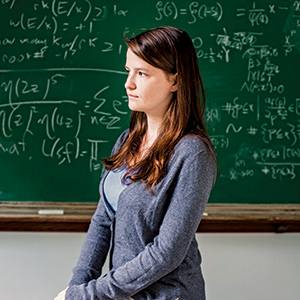
Robert Schneider 17PHD
"He's the coolest mathematician ever."

Madeline Locus 20PHD
"Ken knows how to challenge me and everyone he works with. It's not going to be easy, but I know he will motivate me to learn more and work harder than I thought I could."
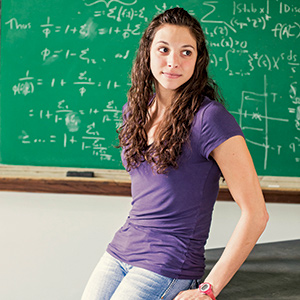
Jesse Thorner 16PHD
"A good adviser needs to give students some sort of a push to get them started, but the question is how much pushing does one do. Ken has mastered being able to determine, based on each student, how much to push on a given problem."
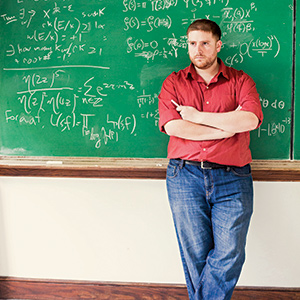
Sarah Trebay Leder 18PHD
"It makes the research more interesting and fun when you are working with other people. Ken is really good at picking good groups. He cares about people's personal qualities and how they will work together."
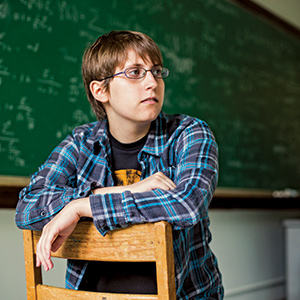
Lea Beneish 20PHD
"His projects are much more interesting than any I've done before. We work whenever we want to work, but we work a lot because it is fun."
